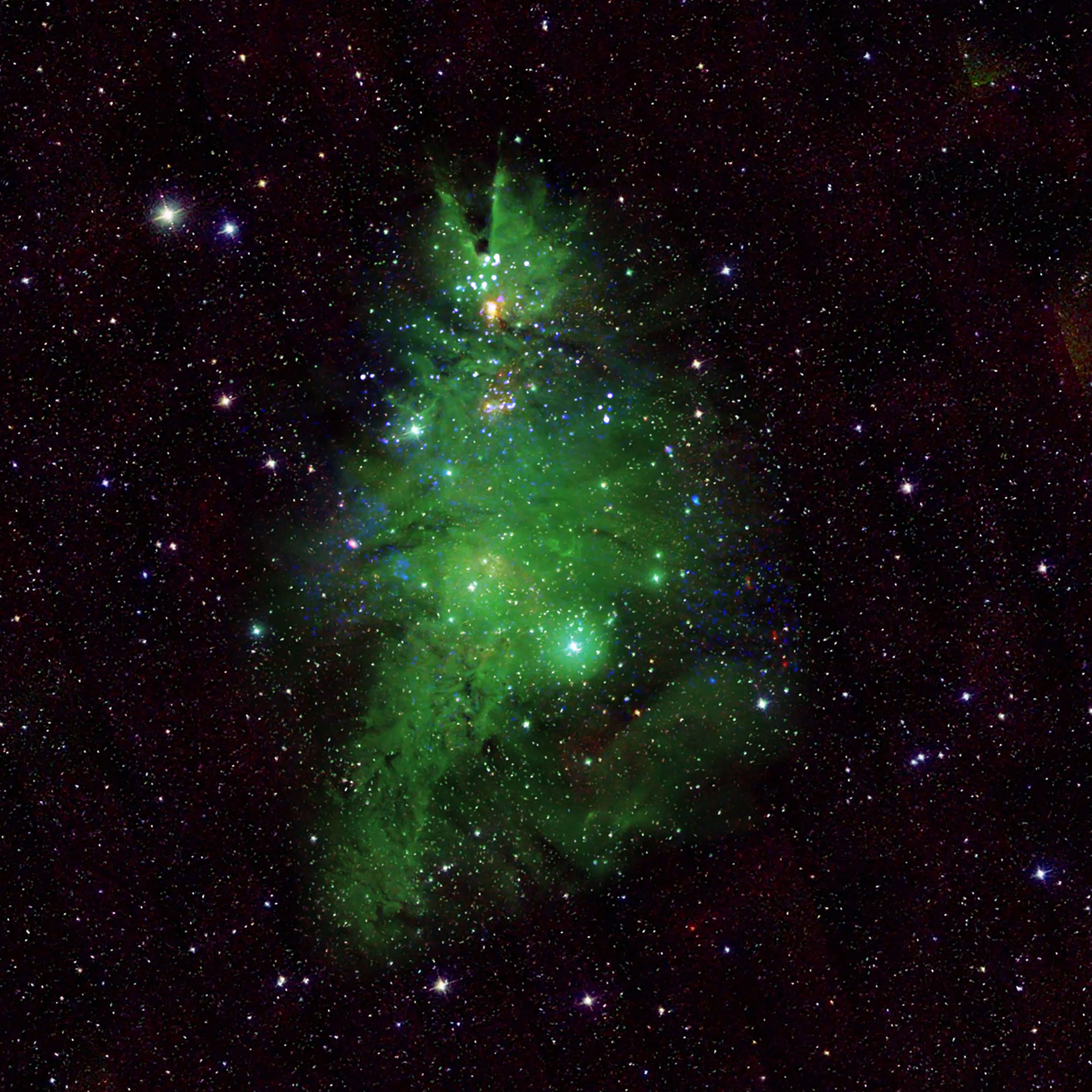NASA's spectacular Christmas Tree Cluster photo captures 5-million-year old twinkling stars
Composite image of deep space is perfect way to celebrate the holidays

A mesmerizing display of cosmic artistry by NASA's Chandra X-ray Observatory has captured a stunning image of NGC 2264, affectionately known as the "Christmas Tree Cluster." This newly released composite image not only showcases the celestial beauty of a cosmic tree but also sheds light on the vibrant life of young stars within our Milky Way.
NGC 2264 is situated approximately 2,500 light-years away from Earth and is made up of a cluster of youthful stars ranging from one to five million years old. The diverse assembly of stars includes smaller ones less than a tenth of the mass of our Sun, and larger stars, containing about seven solar masses. The captivating composite image has been carefully crafted to accentuate the festive resemblance to a Christmas tree and features a blend of colors and a unique 160-degree clockwise rotation.
• Fancy yourself as a space photographer? Check out the best cameras for astrophotography
The National Science Foundation's WIYN 0.9-meter telescope on Kitt Peak contributed optical data, portraying the gas in the nebula in green, reminiscent of the "pine needles" of the cosmic tree. Additionally, infrared data from the Two Micron All Sky Survey adds a touch of realism by showcasing foreground and background stars in white.
Young stars, such as those in NGC 2264, are known for their volatility, exhibiting strong flares in X-rays and various light variations. The artificial blinking lights in the animation aim to showcase the locations of these stars and draw attention to the uncanny resemblance to a festive Christmas tree but of course in "real life" these wouldn't be synchronized.
Chandra's observations, along with those from other telescopes, reveal that the observed variations are caused by a myriad of processes. Magnetic field activities, powerful flares surpassing those of the Sun, and dynamic changes on the stars' surfaces, including hot spots and dark regions, contribute to the dazzling light show. Furthermore, alterations in the thickness of gas obscuring the stars and changes in the material falling onto the stars from surrounding gas disks play significant roles.
The Chandra program is managed by NASA's Marshall Space Flight Center, while the Smithsonian Astrophysical Observatory's Chandra X-ray Center oversees science operations in Cambridge, Massachusetts, and flight operations in Burlington, Massachusetts. This captivating revelation of NGC 2264 reveals the many wonders of the Milky Way and proves that even the cosmos can celebrate Christmas.
The best camera deals, reviews, product advice, and unmissable photography news, direct to your inbox!
The best telescopes for astrophotography will help you gaze even deeper into space

Having studied Journalism and Public Relations at the University of the West of England Hannah developed a love for photography through a module on photojournalism. She specializes in Portrait, Fashion and lifestyle photography but has more recently branched out in the world of stylized product photography. Hannah spent three years working at Wex Photo Video as a Senior Sales Assistant, using her experience and knowledge of cameras to help people buy the equipment that is right for them. With eight years experience working with studio lighting, Hannah has run many successful workshops teaching people how to use different lighting setups.
